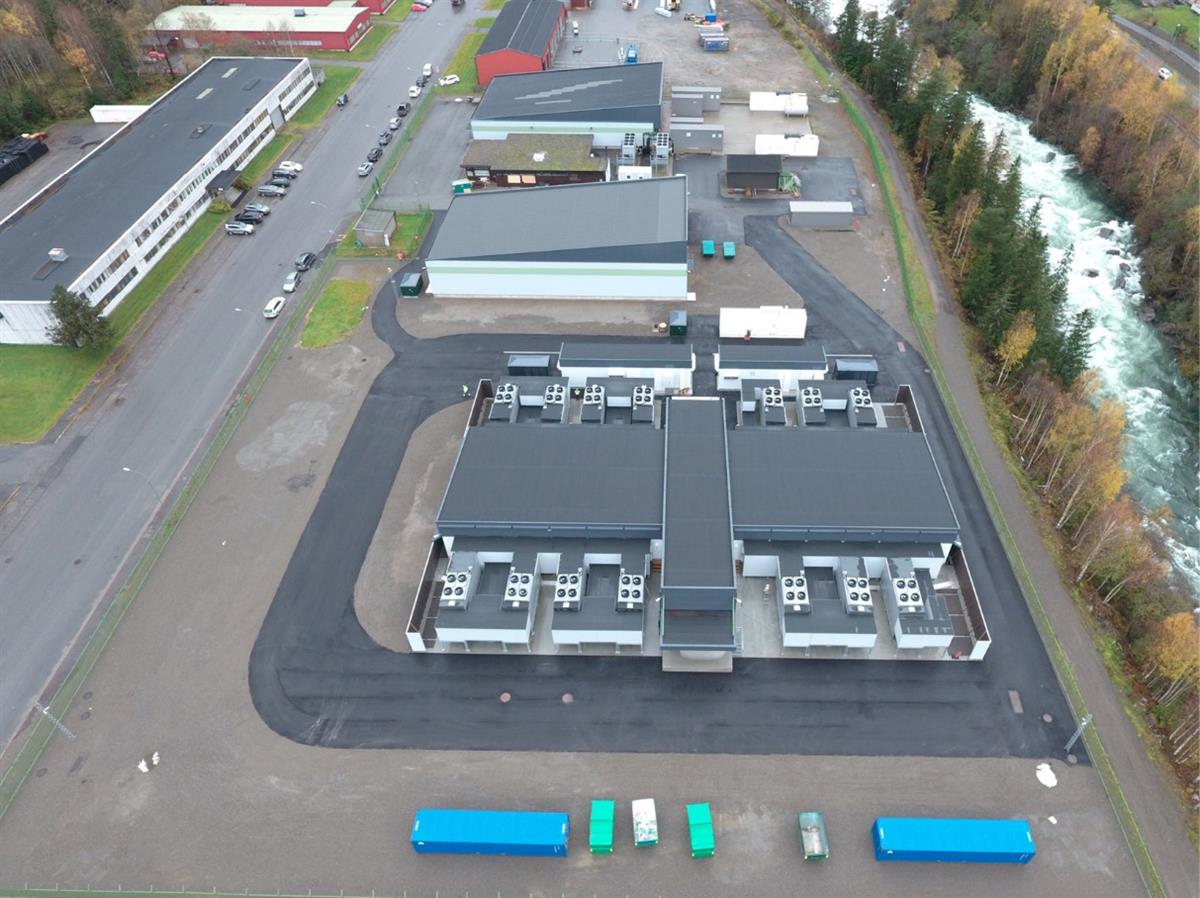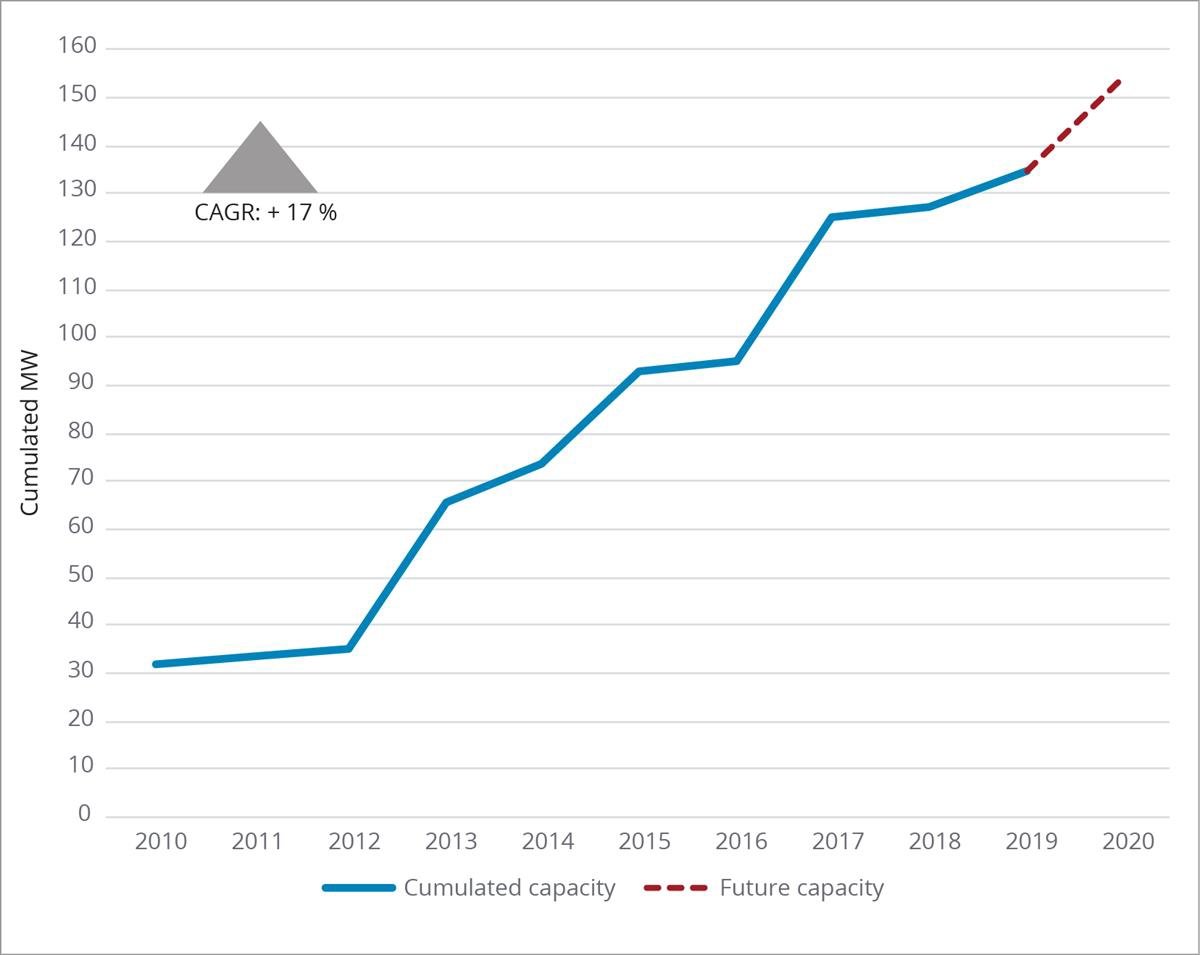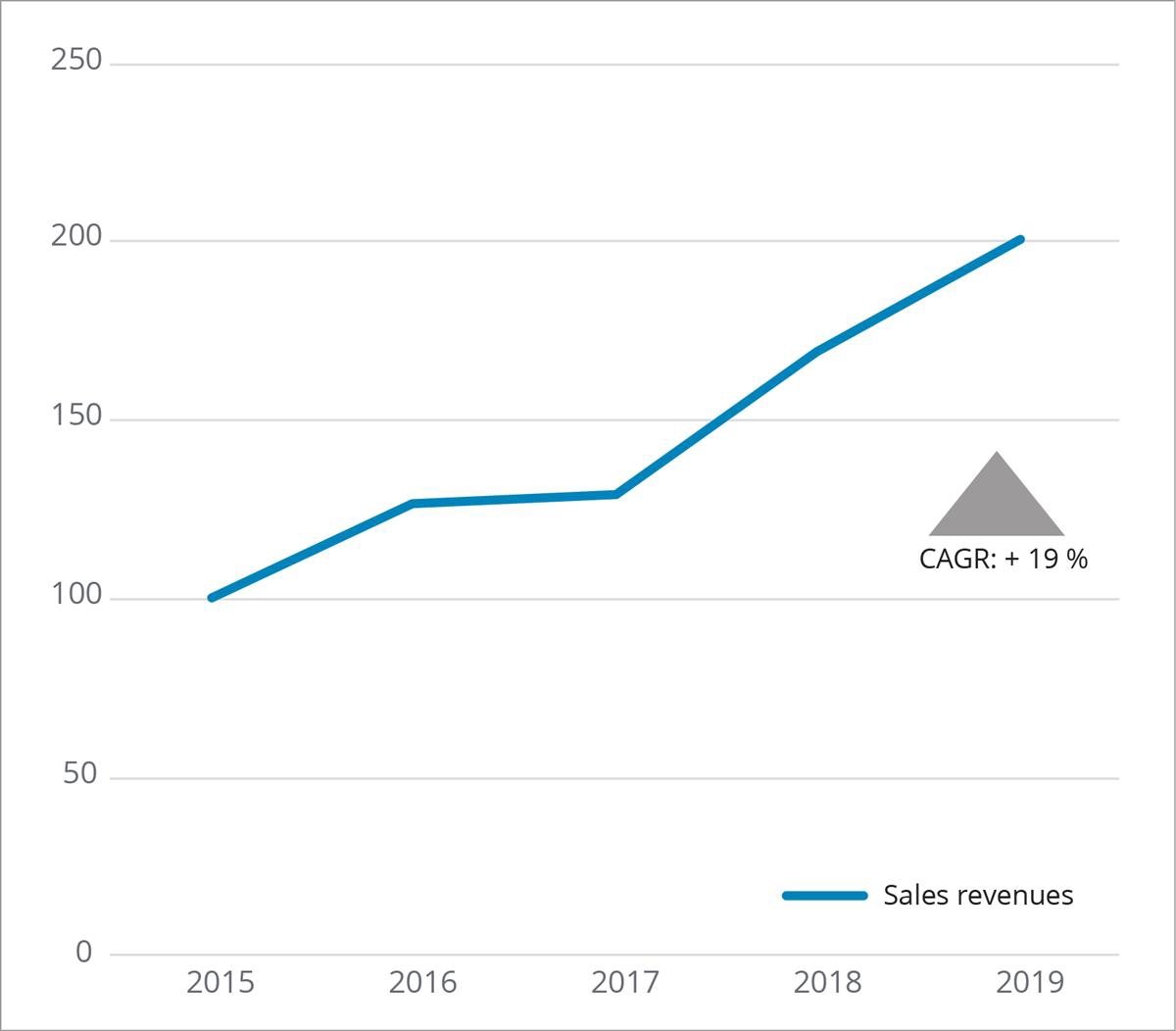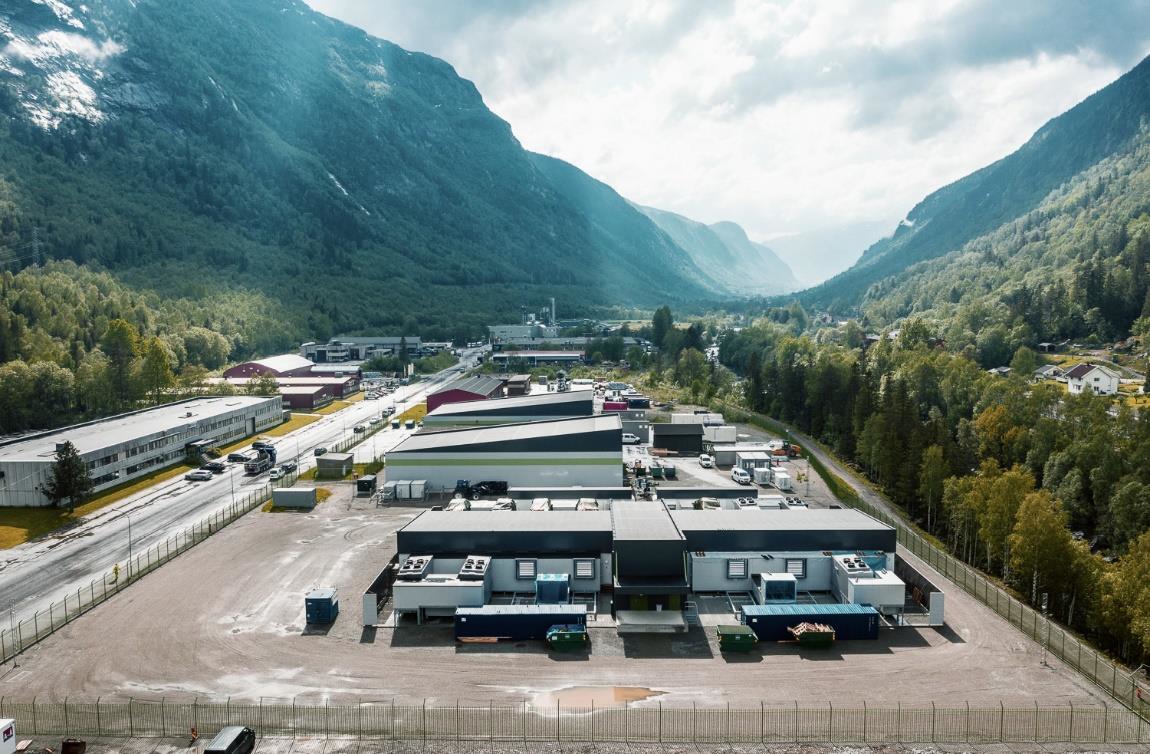3 Value of the data centre industry
The last two years has shown an unprecedented rise in the amount of working from home and home-schooling. .Digital communication has enabled education and business activity to continue to some extent, whilst limiting the spread of infection during the COVID-19 pandemic. During the pandemic, the use of video conferencing solutions has grown among businesses and schools, and because these solutions are largely based on cloud services, they could quickly be scaled up as usage increased. We would probably have struggled more to keep society running in the past, but considerable investment in the expansion and operation of broadband and mobile networks in recent years has enabled us to cope with theincreased load. This has been crucial to many issues ranging from maintaining social contact to continuing to be a productive society.
Norwegian data centres and electronic communication networks are built to handle large volumes of traffic, and they are expertly operated. Since 2012, private developers have invested more than NOK 80 billion in digital infrastructure in the form of mobile and broadband networks. In addition, the data centre industry has invested considerable amounts in data centres in Norway, to the tune of NOK 2.7 billion in 2019 and 2020 alone. This has provided Norway with a solid digital foundation that ranks highly in international comparisons and has meant that many sectors have avoided full or partial lockdown. This is likely to reduce the scope and length of the economic downturn by helping to maintain employment and production levels.
Norway needs a strong and green data centre ecosystem in order to ensure a fundamental digital infrastructure that is robust, secure and handled by a skilled workforce, and thus helps facilitate efficiency enhancement and innovation among its users.
In our modern and increasingly digitalised society, data centres represent a fundamental infrastructure for important areas of society, such as health care, energy and transport. The Norwegian public sector depends on a robust digital infrastructure in order to function effectively, and Norwegian industry needs to continuously engage in digital innovation to increase its competitiveness.
Whether data centres process health data or data from autonomous cars, the data centres and the fibre networks that connect them constitute the basic infrastructure of the digital ecosystem.
3.1 Economic impact analysis – an industry in growth

The Bulk data centre in Vennesla near Kristiansand. Existing buildings are shown in the foreground, while those in the background illustrate Bulk’s vision for expansion in the years ahead.
Source: BULK
As part of its follow-up of the previous data centre strategy, the Ministry of Local Government and Modernisation has commissioned an economic impact analysis of potential and completed data centres in Norway.11
The first part of the study follows up the Government’s initiative in the previous data centre strategy to map the Norwegian data centre industry. Furthermore, the report describes the economic impact of the industry as it was at the time of analysis, and the potential economic effects of establishing data centres in the future.12
The economic impact analysis distinguishes between short-term (so-called direct, indirect and induced effects) and long-term effects (so-called catalytic effects) of data centres. In brief, direct effects refer to the direct impact of the activity in the data centres during their construction (such as construction workers) and operation (such as maintenance, jobs for technicians etc.). Indirect effects refer to activities created among sub-contractors during both construction and operation, such as contracting. Induced effects refer to activities created when data centre employees and sub-contractors spend their wages, for example on shopping and in restaurants. These effects are also often referred to as gross effects.
The report also analyses the long-term (catalytic) effects of the existing data centre industry. In the report, it is estimated that the catalytic effects of the current data centre industry are considerable. According to the economic impact analysis, a cautious estimate indicates that these effects will be equal to the direct, indirect and induced effects combined, which have been estimated at NOK 3 billion for the existing data centre industry.
The economic impact analysis shows that the data centre industry highlights predictable framework conditions, effective processing of licence applications and good access to manpower and training as key areas for Norway to succeed as a data centre location.
3.1.1 Mapping out the industry
As mentioned above, the first part of the study follows up the Government’s initiative and maps out the data centre industry in Norway and its economic impact at the time of analysis. According to the economic impact analysis, 18 data centres can currently be characterised as colocation data centres. In addition, there are numerous smaller data centres and some crypto data centres.

Overview of Norwegian data centres
* Arctic Circle Data Center filed for bankruptcy in January 2020
Source: Implement Consulting Group
The Norwegian data centre industry consists of six large companies and a handful of smaller operators. The six largest companies account for approximately 70 per cent of the capacity and have an average installed capacity of 16 MW. The smaller companies have an average capacity of approximately 1 MW. One of the smallest facilities in the overview is Terrahost, with 0.25 MW, while Green Mountain in Stavanger is one of the largest, with 15 MW.
According to the economic impact analysis, the Norwegian data centre industry represents an established capacity of approximately 105 MW. A recent estimate by the Norwegian Water Resources and Energy Directorate (NVE) shows a larger total installed effect of 174 MW, but the estimate indicates that only 99 MW of this capacity is being used.
Some new data centre locations have been established since the economic impact analysis was undertaken in 2020, and we can therefore assume that the total capacity is somewhat larger than what is presented here. According to the economic impact analysis, massive investments have been made in colocation data centres in Norway in recent years. The analysis reports that a strong increase in investment activity was observed in the period 2019–2020, with at least NOK 2.7 billion invested13 in new colocation data centres in this period. The investment is driven by demand both in Norway and abroad.
On the whole, the development has been positive since the launch of the data centre strategy in 2018, with a number of new centres being established. For example, Digiplex, Green Mountain and Bulk all built new data centres in 2019. Furthermore, in 2019 the telecom company Orange bought the Norwegian data centre operator Basefarm. Google has also announced the procurement of a large piece of land in Skien, and Microsoft has opened data centres in Oslo and Stavanger. Many actors report increased interest from global investment funds with a climate profile. The Columbia Threadneedle European Sustainable Infrastructure Fund’s acquisition of a majority stake in the Lefdal Mine Data Center is a good example. Norwegian data centres also appear to have strengthened their position when it comes to attracting investment and establishing high performance computing services. For example, Volkswagen has moved its most processing-intensive and therefore most energy-intensive crash testing to the Green Mountain data centre in Rjukan.

The Green Mountain DC2-Telemark data centre is located in Rjukan and surrounded by a number of large hydropower plants. The largest land-based aquaculture facility in the world will be constructed no more than 800 metres away and will use waste heat from the data centre.
Source: Green Mountain
Since the economic impact analysis in 2020, we have seen further growth in the Norwegian data centre industry. For example, the German company Aquila is currently building a data centre at Kilemoen in Ringerike municipality,14 and the existing Lefdal Mine Data Center in the county of Sogn og Fjordane recently announced that it had a new German customer for 4.5 MW.15 Other examples include the contract between Bulk Infrastructure and a British financial institution,16 and shortly after opening a new data centre in Eastern Norway, Green Mountain bought land for further expansion in Tysvær municipality.17
Going further back in time, the data centre capacity in Norway has increased by 17 per cent per year since 2010. In the period 2001–2009, hardly any data centres were opened. During the two last years, however, investment has really picked up speed. According to the economic impact analysis, the total installed capacity in 2019 amounted to 135 MW, and a further 19 MW was planned for 2020.

Development of data centre capacity – cumulated in MW
CAGR: Compound annual growth rate
Source: Implement Consulting Group
Since 2015, Norwegian data centres have seen average annual growth of 19 per cent in sales revenues, i.e. faster than the growth in capacity. This is because most data centres still have a lot of unused capacity and are thereby able to generate more sales revenues.
Index 2015 = 100

Figure: Trend in data centre sales revenues
CAGR: Compound annual growth rate for sales revenues.18
Source: Implement Consulting Group
The Norwegian data centres are used by a number of different clients. In most cases, the data centres supply so-called ‘wholesale’ capacity, i.e. storage space, cooling, network connection and electricity, while the clients install and operate server hardware in the form of cabinets and racks themselves. Other operators also sell ‘retail’, meaning that in addition to cooling, network connection and electricity, they also provide server hardware. The data centres also differ in terms of client types.
Many of the Norwegian data centres are used by clients who need large computing capacity and can be located far from where the data are being generated. This also means that many of the data centres’ main customers are outside Norway.
High performance computing in Norway
An example of data centres being used to provide high performance computing capacity is that of Volkswagen Group, which has chosen to move its heavy computer operations – crash test simulation for use in developing new models – to the Green Mountain data centre in Norway.
The Norwegian data centres are attractive for such clients because of the CO2-free electricity, low electricity prices, high levels of security and stability.

Volkswagen Group is among the clients that have chosen the Green Mountain data centre in Rjukan.
Source: Volkswagen Group
Other data centres, however, primarily serve Norwegian clients and offer services that require closer proximity to where the data are generated and where the clients want more flexibility to scale their consumption up and down, and use various types of computing power and data storage.
No data centres in the hyperscale category have yet been established in Norway. Nor have edge data centres become widespread in Norway, but more are expected as the market expands. For example, the Green Edge Compute company has announced plans to build its first edge data centre in Trondheim so that it can be closer to the end users and shorten delay times when utilising the Internet of Things and 5G. In addition, the Miris company plans to build 15 regional and 25 local edge data centres in the Nordic region.19
The economic impact analysis estimates that in 2019, the data centre activity in Norway represented a turnover of approximately NOK 1.6 billion and employed nearly 300 people.
3.1.2 Economic impact and value creation
The second part of the economic impact analysis investigates the wider economic ramifications of the established data centre industry in Norway. According to the analysis, the data centres generated NOK 1.5 billion in direct value to the Norwegian economy in 2019. Of this, NOK 0.9 billion stemmed from the operation and maintenance of the data centres and NOK 0.5 billion from construction work associated with building them. Through their consumption of goods and services from sub-contractors, the data centres created NOK 1.1 billion of added value. According to the analysis, the data centres employed 1023 persons in 2019. The private consumption of these employees contributed to the employment of 541 further persons. In 2019, the data centres accounted for a total of 2376 jobs in Norway. Most jobs that data centres create are associated with the construction of premises and installation of servers.
3.1.3 Potential economic impact
The researchers have used four scenarios to analyse the economic impact of the potential establishment of data centres in Norway, where the number and type (hyperscale, colocation and edge) of data centres vary. The analysis also includes a discussion of elements that will be critical for achieving the goals in the different scenarios.
Value chains create jobs
Only a small proportion of Basefarm’s 750 employees actually work in the company’s data centre. However, hundreds of Basefarm employees and thousands of its clients’ employees work on solutions that the data centre supplies. Employees are working with, for example, operating infrastructure, artificial intelligence and security. The clients, such as banks, manufacturing companies or public sector actors (such as Altinn and Bane NOR), use the data to make their services more competitive. The quality of the value chain depends on high quality and competence in its digital foundation, the data centre, as well as other components.
Source: Basefarm
According to the economic impact analysis, the data centre industry represents considerable potential for Norway. In one of the scenarios described in the analysis, which assumes an annual capacity growth of approximately 25 per cent, the data centre industry could potentially employ a total of 11 100 persons in 2025 and 24 900 in 2030. In this scenario, these are made up of approximately 9 700 employees in colocation data centres, 3 000 in hyperscale data centres and 12 200 in edge data centres.
In the same scenario, the industry could contribute NOK 14 billion to GDP in 2025, primarily on the basis of colocation data centres. Furthermore, the industry could represent NOK 30.9 billion of GDP in 2030, divided into approximately NOK 12.7 billion from colocation, NOK 3.9 billion from hyperscale and NOK 14.3 billion from edge data centres.
Construction of data centres creates jobs
Green Mountain’s 22 000 square metre data centre at Rennesøy in the county of Rogaland was built with the aid of 26 sub-contractors, in addition to Cowi and NCC, who were consultants and the general contractor respectively. The first phase involved the fitting of one of the six halls.
A review shows that to date, the suppliers involved in the construction of three halls for the new DC1 Stavanger data centre have worked a total of 400 000 man-hours . Another 200 000 hours are expected to be needed to complete the two remaining halls. Green Mountain’s calculations show that 70 per cent of these man-hours have been supplied by local contractors. This construction project shows how building data centres supports a wide range of sub-contractors whose services range from administration to plumbing, cooling systems, access control, security and machinery leasing.
Source: Green Mountain
It should be noted that this scenario assumes a very high growth rate, and other scenarios in the economic impact analysis that also assume high growth could be regarded as somewhat more realistic. This scenario was included to provide a perspective on the economic impact of a situation with very high growth in the data centre industry. In order to achieve such a growth rate, Norway would need to make the necessary provisions for the data centre industry in the years ahead and exceed the global rate of growth in the industry. However, in light of their planned future expansion, some leading industry players claim that the potential for growth could be even greater than what is outlined in this scenario. Scenario analyses are fundamentally uncertain and based on a number of assumptions, and the figures referred to here should only be used as an illustration of the potential that this industry represents.